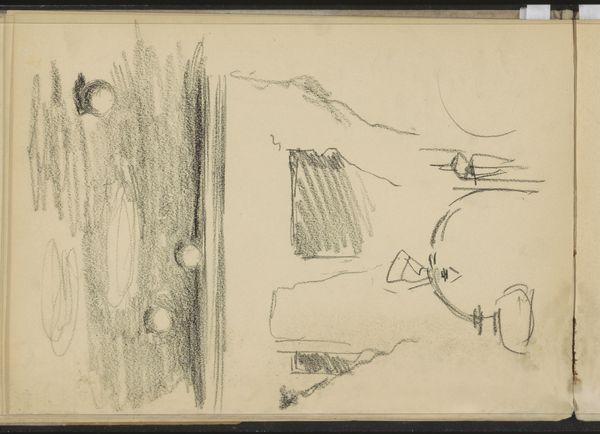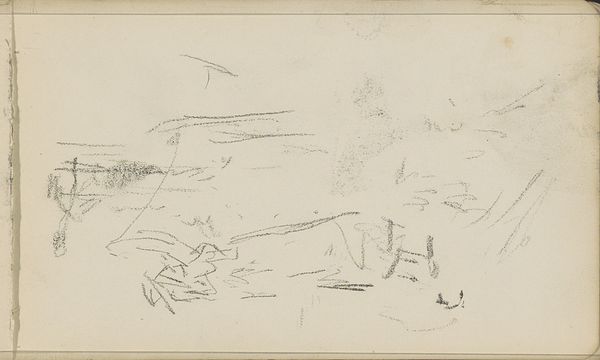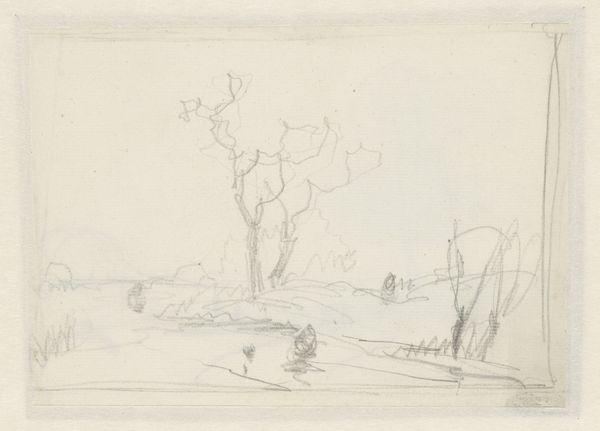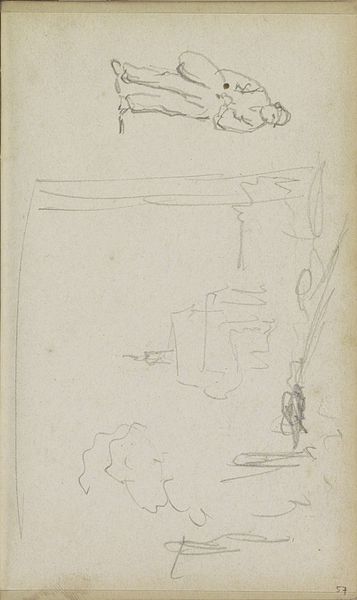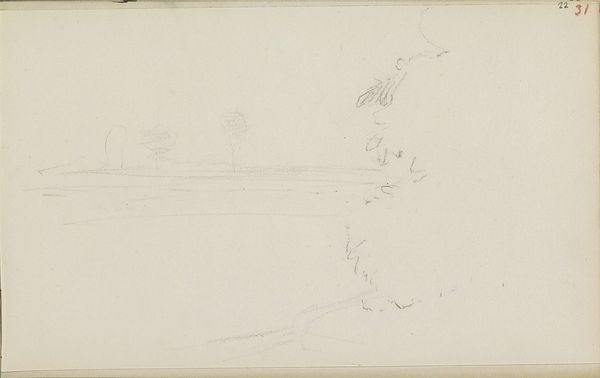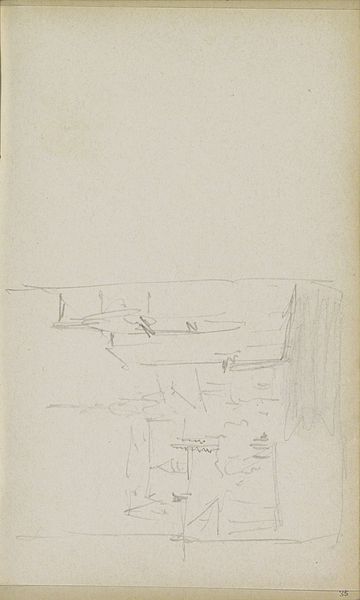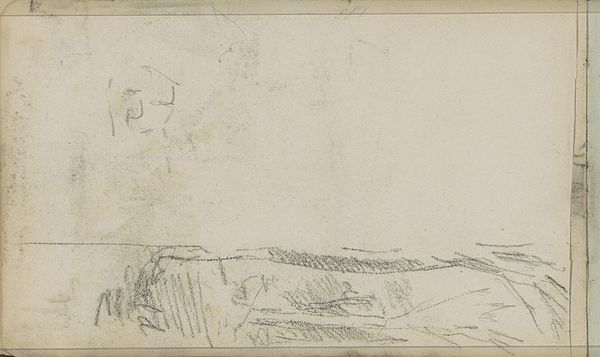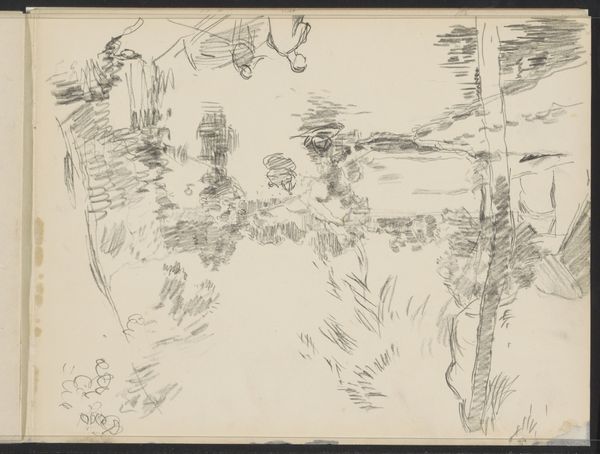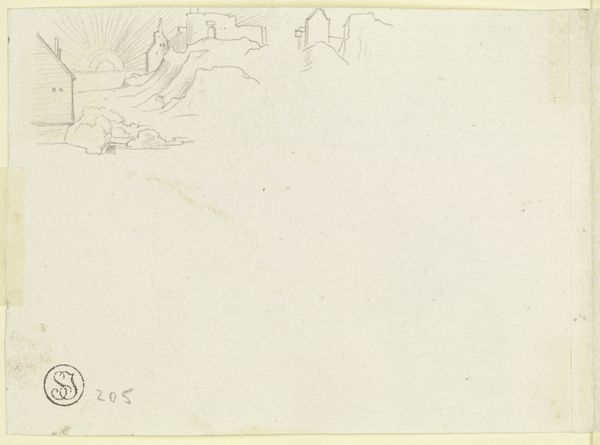
drawing, charcoal
#
drawing
#
impressionism
#
landscape
#
charcoal
#
realism
Copyright: Rijks Museum: Open Domain
Editor: This is "Soldiers in a Landscape," a charcoal drawing made between 1884 and 1886 by George Hendrik Breitner, and currently at the Rijksmuseum. It feels almost like a fleeting impression, very minimal and stark. What catches your eye in terms of composition? Curator: The sketch is remarkable in its economy. Breitner uses a minimum of lines to suggest form and space. The horizontal lines establish the landscape, dividing the composition. The figures themselves are clusters of strokes, barely defined, yet they evoke a sense of presence. Notice the contrast between the more defined foreground elements and the vague background; what effect do you think this contrast achieves? Editor: It does make the foreground feel closer, almost like we're right there observing the soldiers. The looser background gives it an almost dreamlike quality, as though it's a memory. But how much importance can we attribute to such a quickly made sketch? Curator: Precisely. The immediacy of charcoal allows Breitner to capture a fleeting moment. This sketch prioritizes the act of seeing, rather than meticulous representation. Observe how the sparse application of charcoal results in an interplay between positive and negative space; do you feel that Breitner uses these visual cues to establish a certain atmospheric tension? Editor: Absolutely, it feels unfinished but somehow complete at the same time. I’m really struck by the dynamic tension achieved through these very basic elements. Curator: Indeed. Through simple lines and forms, Breitner evokes the stark reality of soldiers in a landscape, and by emphasizing form, structure, and composition he communicates this very powerful vision.
Comments
No comments
Be the first to comment and join the conversation on the ultimate creative platform.
